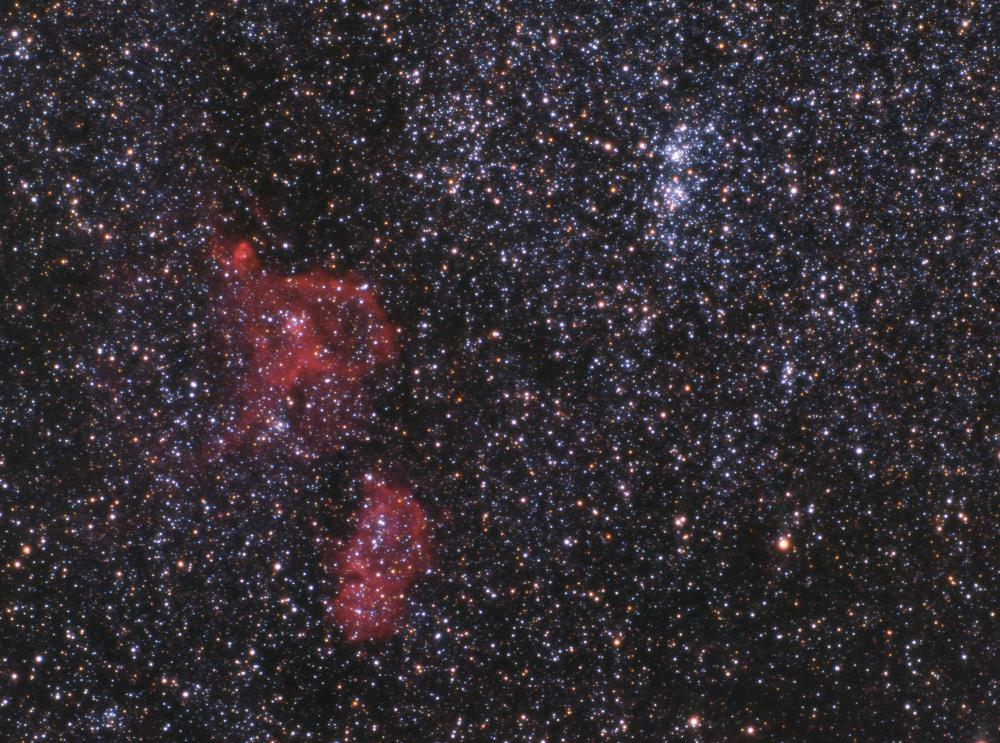At WiseGEEK, we're committed to delivering accurate, trustworthy information. Our expert-authored content is rigorously fact-checked and sourced from credible authorities. Discover how we uphold the highest standards in providing you with reliable knowledge.
What Is the Hydrogen Line?
The hydrogen line generally refers to the radio frequency emissions of cold hydrogen gas in interstellar space. There are vast amounts of hydrogen floating around in our galaxy and in other galaxies. Some of this gas is heated by nearby stars, causing it to emit electromagnetic radiation in the visible spectrum — in other words, light. Much of it, however, is far from any source of heat, but is nevertheless detectable due to the fact that it emits electromagnetic radiation at a wavelength of 8.3 inches (21.1 centimeters), within the radio portion of the spectrum. This is known as the 21 centimeter line, or the hydrogen line, and its existence was predicted by the Dutch astronomer Hendrik van de Hulst in 1944.
According to quantum theory, the electrons in an atom can only have certain fixed energy levels, with nothing in between. The lowest energy level is known as the “ground state.” Electrons can absorb energy, causing them to “jump” to a higher energy level, but sooner or later, they will fall back to a lower level, and eventually to the ground state, with the time taken inversely proportional to the amount of excess energy. When an electron drops down a level, the extra energy is released as electromagnetic radiation with a frequency that corresponds to the energy difference between the two levels.

The frequency of electromagnetic radiation is proportional to its energy: the greater the energy, the higher the frequency. This relationship is described by Planck’s equation: E = hf, where E is the energy, f is the frequency and h is Planck’s constant, which has a value of approximately 6.626 * 10-34 joule-seconds. The wavelength can be calculated as simply the speed of light divided by the frequency. Thus, when an electron drops from a higher to a lower energy level, electromagnetic radiation with a certain, fixed frequency and wavelength, related to the difference in energy, will be emitted. This radiation shows as narrow lines on an emission spectrum.

Each element has a characteristic, unique emission spectrum consisting of a series of lines at specific wavelengths. The hydrogen spectral series contains a number of spectral lines, four of which are within the visible part of the spectrum. One of these, a red line known as H-alpha, is much used in astronomy for detecting ionized hydrogen in nebulae. These emission lines for hydrogen can each be regarded as a hydrogen line, but the term more usually refers to the radio emission produced by cold hydrogen gas at a wavelength of 21 centimeters. This is due to a different physical process. The same rules regarding energy, frequency and wavelength still apply, however.
Electrons and protons have a quantum property known as “spin” that can have two possible directions. Since a hydrogen atom consists of one proton and one electron, it can have the two spins in the same direction or in different directions. In the former case, the atom has slightly more energy and will eventually drop to a lower energy state by the electron switching its spin. The extra energy is emitted as electromagnetic radiation and since the energy difference is small, the radiation has a long wavelength and low frequency: 21 centimeters and 1420.4 MHz, respectively. The small energy difference also means that any given hydrogen atom in the same-spin state will, on average, take a very long time — several million years — to drop to an opposite-spins state; however, there is so much cold hydrogen in a galaxy that at any one time enough hydrogen atoms will be emitting 21 centimeter radio waves for these to be detectable.
The 21 centimeter line was detected in 1951 by Harold Ewen and Edward Purcell. It has proved to be of crucial importance in radio astronomy. Much of our galaxy is hidden from view by large clouds of dust that do not allow the light from stars to pass through them. Radio waves, however, are not obstructed by dust clouds and, since there is a great abundance of cold hydrogen in the galaxy, it is possible to observe and map the galaxy using radio emissions at the hydrogen line. Radio astronomy, using the hydrogen line, has enabled us to determine the size, shape and structure of our galaxy.
The hydrogen line also has great significance for the Search for Extra Terrestrial Intelligence (SETI). It is thought very possible that a technologically advanced civilization might use this frequency to attempt to communicate with other civilizations. The frequency has been used not only to listen for incoming messages, but also to send them. The Pioneer 10 and 11 spacecraft, which are destined to drift indefinitely through interstellar space, contain plaques depicting the hydrogen line, its wavelength, its frequency and the physics behind it. It represents a unit of measurement that it is believed aliens might understand.
AS FEATURED ON:
AS FEATURED ON:












Discussion Comments
They've been using the hydrogen line to try to detect alien signals for more than 50 years, but the only "real" hope so far has been the so-called "Wow" signal in 1977. But even that last only about a minute. Still, it's fun to think about what it would be like to actually hear something. Can you imagine being the person on the other end?
Post your comments